36th Field Artillery Group
June 25, 1963
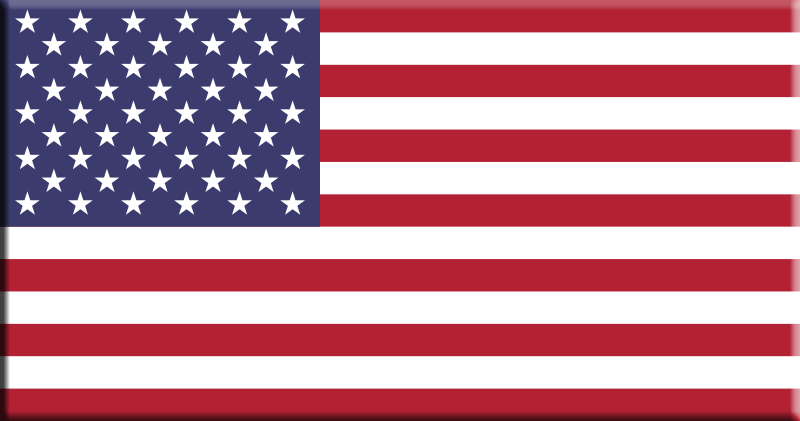
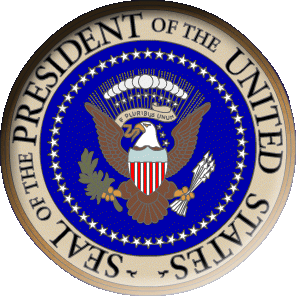
______________________________________
| Presidential visit at height of Cold War resonates 40 years later By Anemone Rueger Many people remember President John F. Kennedy's famous declaration, "Ich bin ein Berliner," but few realize the day before he said those words, Kennedy spoke at a smaller town on the other side of Germany. Forty years ago Wednesday, on June 25, 1963, Kennedy visited Fliegerhorst Kaserne just outside Hanau. Fifteen thousand U.S. soldiers awaited him, as did tens of thousands of enthusiastic Germans. "Seems like we spent many, many days preparing for an
event that lasted a few minutes," recalled Jim Chorazy,
who served with Combat Command B of the 3rd Armored Division
at Gelnhausen. The memory of those few minutes, however, has
lasted for every soldier and civilian who got to see the president. Kennedy decided to get a first-hand look at the battle readiness of U.S. troops in Germany. The Army alone had more than 250,000 soldiers in the country, among them 18,000 3rd AD soldiers at seven bases in the state of Hessen. Their mission was to train and to defend the Fulda Gap. In May 1963 the division got orders to prepare for and host a presidential visit to the Hanau military community. Hanau was chosen because of its geographic location and the
available logistics, said Chorazy. "Fliegerhorst had an
easily accessible airfield for such a visit," he said. In
addition to 3rd AD the larger Hanau community was also home to
the 37th Engineer Combat Group, numerous field artillery units,
the 36th Medical Battalion and many smaller V Corps units, about
10,000 soldiers in all. Preparations for the visit involved them
all along with units all over U.S. Army Europe and U.S. Air Force
Europe. "When it became known that Kennedy was coming, new grass
was sown on Fliegerhorst. But then it got very hot just before
the visit, and the fresh grass turned brown," said Hanau
resident Werner Bayer. "The Americans simply sprayed it
green. Some German onlookers commented, 'typical Ami style.'" "We were given the job to bake a cake in the shape of the PT 109 boat Kennedy had commanded in the Pacific," said Sanders. The order referred to the torpedo boat Kennedy commanded in 1943. A Japanese destroyer sank PT 109, but the crew was saved a couple of days later and Kennedy was celebrated as a hero by the American press. "So Riddle baked this huge cake," Sanders said.
"I remember the Secret Service came in the morning and stayed
all day watching Riddle make the cake. They even checked the
cake with wires." Riddle was happy to shake hands with the
president and received a big thank you. A jubilant German-American crowd greeted Kennedy when his helicopter landed punctually at 10:30 a.m. on June 25. "There was raving enthusiasm, something you can't imagine today," said Bayer, who was 15 at the time. "Kennedy was a symbol for the young generation. He was our bearer of hope. He took the sympathy of the Germans by storm and won their hearts," Bayer said. Kennedy's youthful aura, which clearly set him apart from Germany's Chancellor Konrad Adenauer, who had been in office since 1949, was also appealing. "He also proved his courage during the Cuban [missile] Crisis. That left a strong impression with the Germans. He was so strong and upright that we had unlimited confidence in him," Bayer said. "When I think about it, it still gives me goose bumps. He was such an awesome guy," he added after a pause. Kennedy started his visit by inspecting the honor guard made up of American, Canadian, German and French soldiers. The four national anthems were played, and Maj. Gen. John R. Pugh, 3rd AD commander and Kennedy's escort on that day, reviewed the mile-long parade front. Then the president addressed the troops, thanking them for their engagement. "Never before in history has a country had so many of its sons serving so far away from their own land in a time of danger, not for the purpose of conquest, but for the purpose of freedom." After an inspection of a static display including tanks, missiles, engineer equipment, aircraft and helicopters, the president went to the 54th Transportation Battalion mess hall and dined with over 300 soldiers and airmen. The Hanauer Anzeiger newspaper of June 26, 1963, observed that the president drank from a plastic cup just like all the soldiers did, and he enjoyed it. At 2 p.m. Kennedy left Fliegerhorst in a big black Mercedes convertible on his way to a reception in Frankfurt, accompanied by German Vice Chancellor Ludwig Erhard. "All the 20 kilometers from Fliegerhorst to Frankfurt people were lined up at both sides of the road," said Bayer. "All who could walk were out there. It must have been hundreds of thousands, an entire generation." Holger Lutzen of the Hanau Legal Center also has vivid memories of seeing the American president from his position on the shoulders of his father as a little boy. "I was there in Frankfurt and I clearly remember the endless crowd of people." The euphoric atmosphere lasted several weeks. "After
Germany's victory in the 1954 [soccer] World Cup, Kennedy's visit
was probably the biggest fest for Germans," Lutzen said. The spectacular presidential visit also left positive side effects on Hanau Army Airfield in its wake, said Sanders. "Fliegerhorst got much needed repairs. People said, we wish the president would come more often." |
______________________________________
Weapons systems
on display at Hanau Fliegerhorst
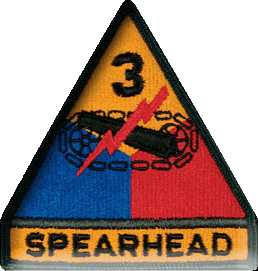
3rd Armored Division
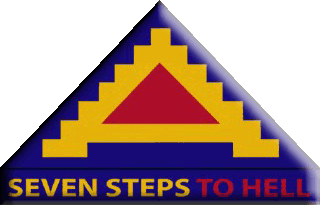
7th Army

V Corps
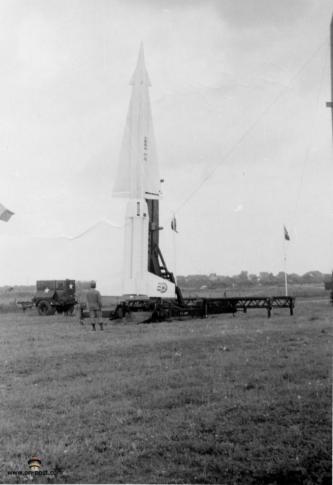
MIM-14 Nike-Hercules Surface to Air Missile
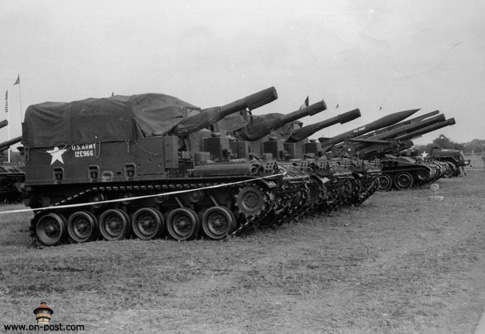
M 44 Self propelled Howitzers
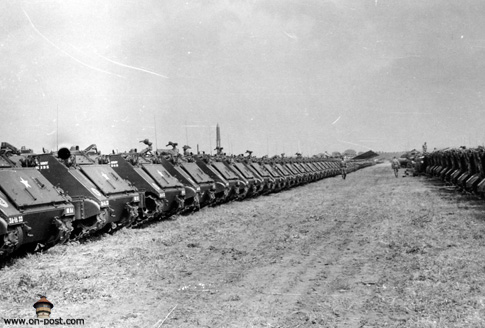
A row of M113's
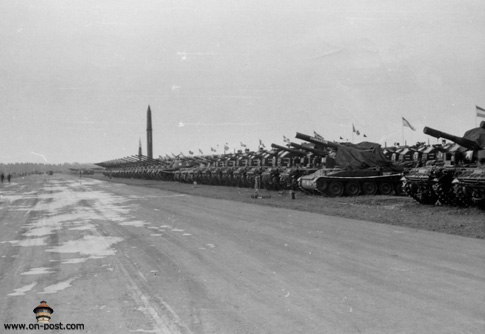
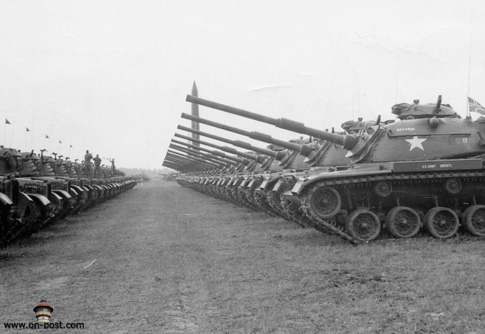
M48 Patton Tanks
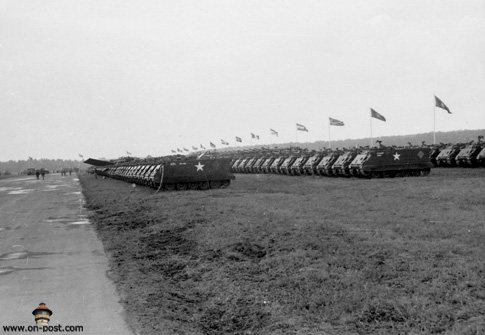
M 113 APC's
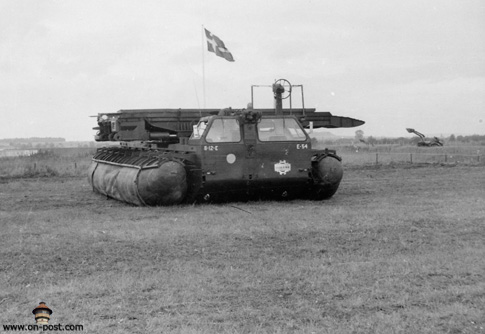
US Army Pontoon Bridge
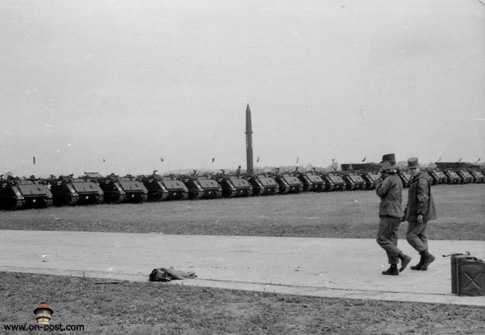
The M 113 APC row, the Redstone Missile in behind
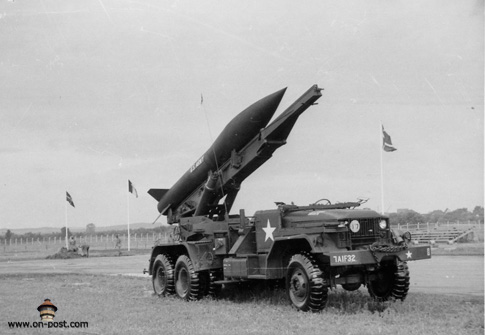
The MGR-1 Honest John missile was the first nuclear-capable surface-to-surface rocket in the US arsenal. Designated Artillery Rocket XM31, the first such missile was tested in 1951 and deployed in January 1953. The designator was changed to M31 in September 1953, and the missile was deployed in Europe several months later. Alternatively, the missile was designed to be capable of carrying ordinary high-explosive warheads, even though that was not the primary purpose for which it was envisioned.

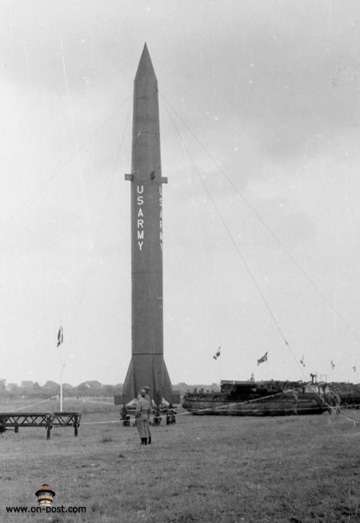
The PGM-11 Redstone was the first large American ballistic missile.
A short-range surface-to-surface rocket, it was in active service with the U.S. Army in West Germany from June 1958 to June 1964 as part of NATO's Cold War defense of Western Europe.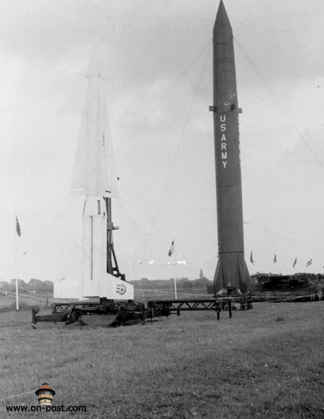
MIM-14 Nike-Hercules and the PGM-11 Redstone
Used with permission from Walt Leon ©2010
______________________________________
All photos: source I-net
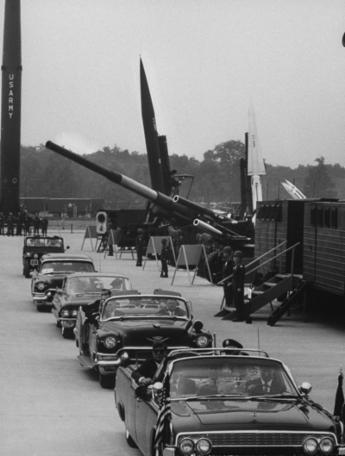
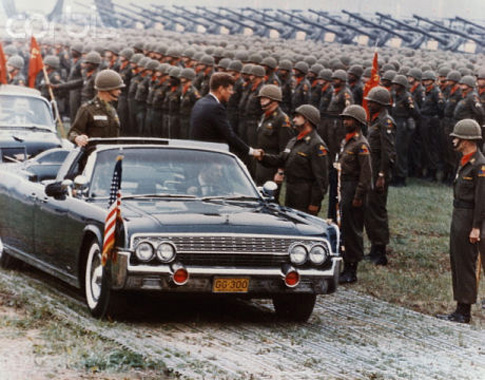
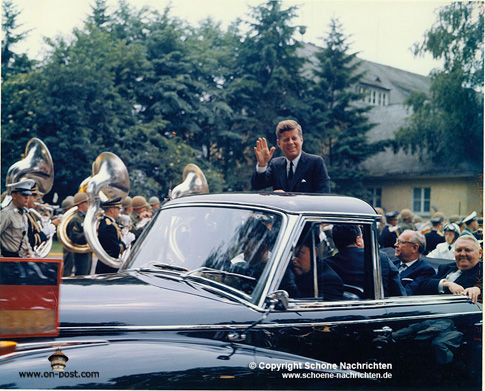 source:I-net
source:I-net
Presedent Kennedy and German Chancellor Ludwig Erhardt
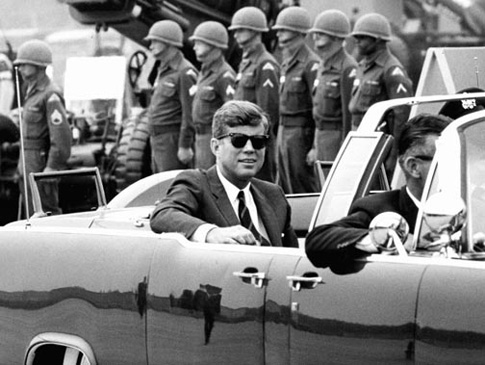
The Presedent reviewing the troops
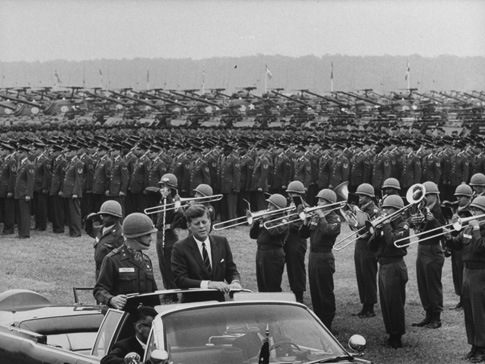
Maj. Gen. John R. Pugh, 3rd AD commander, was President Kennedy's escort for the Hanau review and ceremony.
______________________________
All photos © Lars Hagen
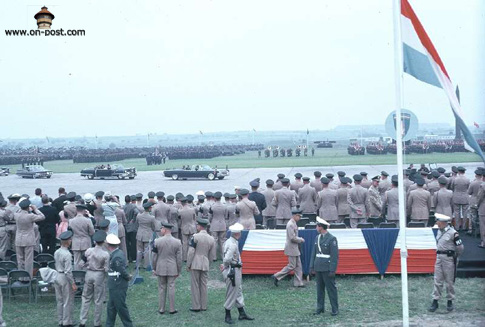
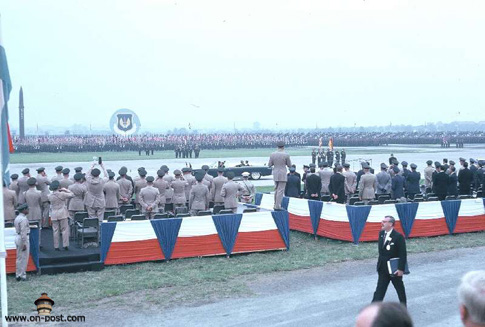
President Kennedy in lead limousine reviews a massive formation of 3rd Armored Division. Seventh Army and V Corps Artillery troops at Fliegerhorst Kaserne & Army Airfield.
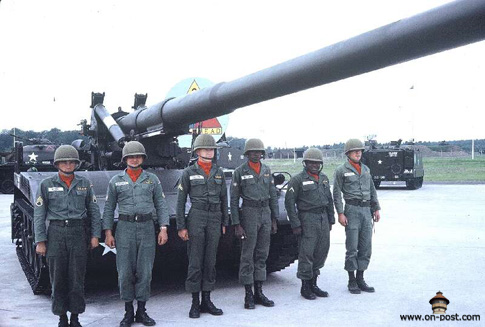
A M107 Gun and Crew
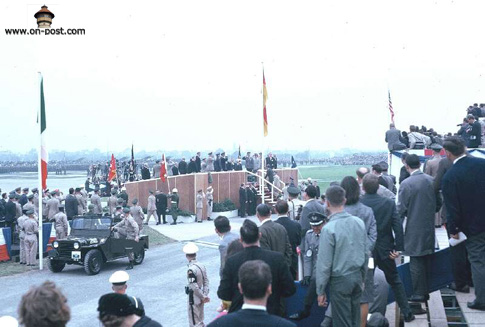
__________________________________________________
Following
the events at Hanau, Kennedy traveled to nearby Frankfurt where he gave an
enthusiastically received speech to at packed square at the historic
Roemer Platz.
This was the day before his famous speech:
All free men, wherever they may live, are citizens of Berlin, and, therefore, as a free man, I take pride in the words
"Ich bin ein Berliner."
__________________________________________________
Graphics, Articles and photos on this web site are posted by permission of their owners and are for viewing only. They are not for general distribution, nor for use on other websites, unless permitted by the web master or the original owner. If you find any files on this site that you believe are unauthorized, please contact the web master immediately so that the issue can be resolved.
__________________________________________________